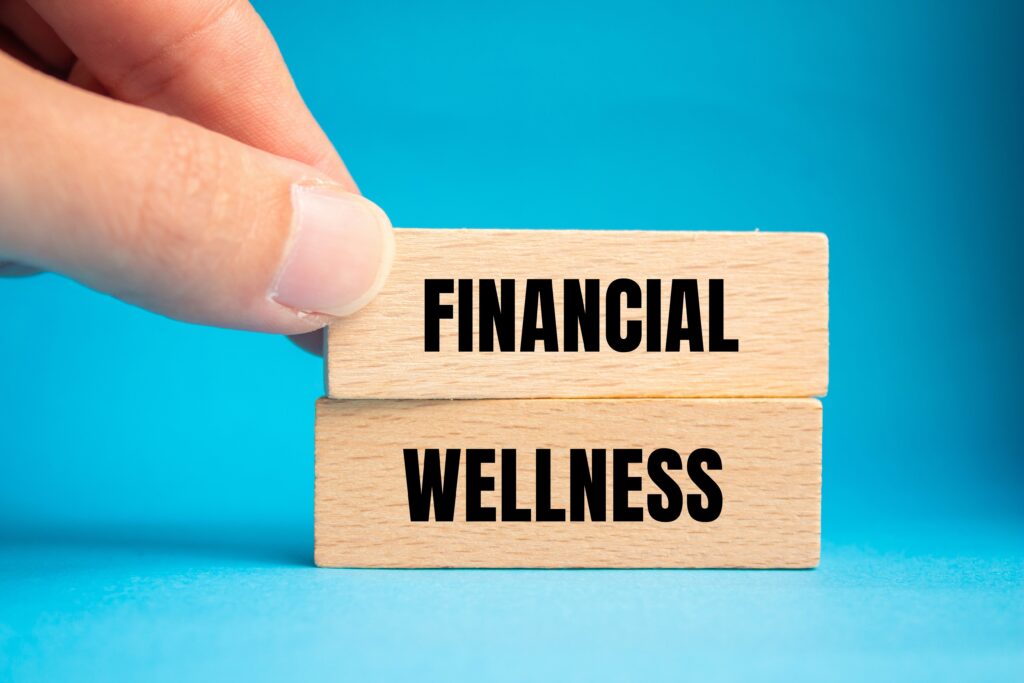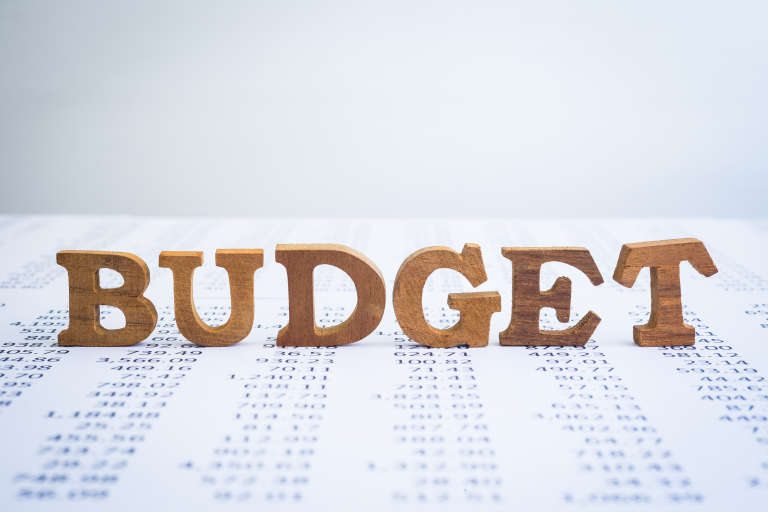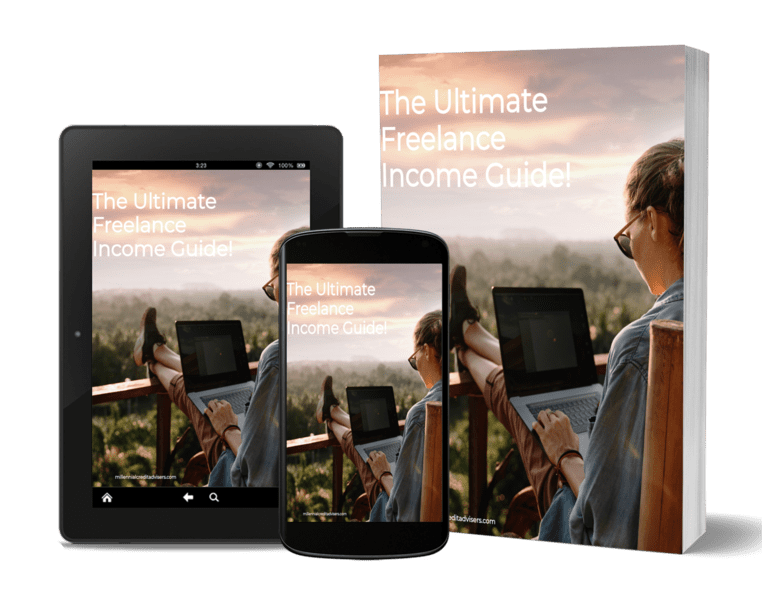Building A Solid Budget. The Essential Foundation For Effective Debt Repayment! Find Out More In Our Latest Article!
THIS ARTICLE MAY CONTAIN AFFILIATE LINKS, MEANING I GET A COMMISSION IF YOU DECIDE TO MAKE A PURCHASE THROUGH MY LINKS AT NO COST TO YOU. PLEASE READ MY AFFILIATE DISCLOSURE FOR MORE INFO.
DON’T HAVE TIME TO READ THE FULL ARTICLE. HERE’S WHAT YOU ARE MISSING.
- Building A Solid Budget. The Essential Foundation For Effective Debt Repayment! Find Out More In Our Latest Article!
- WHY A SOLID BUDGET IS THE BACKBONE OF ANY DEBT REPAYMENT PLAN
- FINANCIAL FOUNDATIONS: HOW BUDGETING SUPPORTS DEBT REDUCTION
- ESTABLISHING YOUR BUDGET: ESSENTIAL FIRST STEPS
- DESIGNING A PERSONALIZED BUDGET TEMPLATE
- ADVANTAGES OF USING A SOLID BUDGET IN DEBT REPAYMENT
- POTENTIAL DISADVANTAGES OF BUDGETING FOR DEBT REPAYMENT
- STRATEGIES FOR STICKING TO YOUR BUDGET
- REVIEWING AND ADJUSTING YOUR BUDGET OVER TIME
- BUDGETING SUCCESS STORIES TO INSPIRE YOUR DEBT REPAYMENT JOURNEY
- LINKING BUDGETING WITH BROADER FINANCIAL WELLNESS
Building a strong financial future starts with a plan. When you’re looking to get out of debt, having a solid budget in place is crucial. A solid budget is the backbone of any debt repayment plan because it helps you track income, control spending, and allocate funds toward paying down debt.

Creating a budget isn’t just about restricting your spending. It’s about understanding where your money goes and making intentional choices. With a clear budget, you can see exactly how much you can put toward debt each month while still covering your necessary expenses.
Many people avoid budgeting because it seems complicated or limiting. But a good budget actually gives you freedom. When you know your financial boundaries, you can make confident decisions and watch your debt shrink month after month.
KEY GIVEAWAYS
- A well-designed budget reveals hidden spending patterns and creates opportunities to redirect money toward debt payoff (Building Your First Budget).
- Regular budget reviews help you adapt to life changes while staying committed to your debt repayment goals (Monthly Budget Check-Ups).
- Combining budgeting with debt snowball or avalanche methods accelerates your journey to financial freedom (Effective Debt Elimination Strategies).
WHY A SOLID BUDGET IS THE BACKBONE OF ANY DEBT REPAYMENT PLAN

Creating a budget gives you clear direction and control over your finances when tackling debt. It helps you see where your money goes and how much you can put toward paying off what you owe.
CORE PRINCIPLES OF BUDGETING FOR DEBT REPAYMENT
A good budget starts with knowing your exact income and expenses. Track every dollar coming in and going out for at least a month. This creates a complete financial picture.
Next, separate needs from wants. Housing, food, and utilities are needs. Entertainment and dining out are wants. When repaying debt, focus on needs first.
Set specific and realistic debt payment goals. Make them measurable so you can track progress. For example, aim to pay off a specific credit card in six months.
The 50/30/20 rule can be helpful:
- 50% for needs
- 30% for wants
- 20% for savings and debt repayment
When focused on debt elimination, adjust these percentages to put more toward repayment. Even small changes can make a big difference over time.
FINANCIAL FOUNDATIONS: HOW BUDGETING SUPPORTS DEBT REDUCTION

A solid budget creates financial awareness. Many people are surprised to learn how much they spend on coffee, subscriptions, or impulse purchases. This awareness helps identify areas to cut back.
Budgeting prevents new debt while paying off existing balances. Without a plan, it’s easy to continue harmful spending patterns.
Your budget should include an emergency fund. Even a small one ($500-1000) helps avoid new debt when unexpected expenses arise.
Technology makes budgeting easier:
- Free apps like Credit Karma and EveryDollar
- Spreadsheet templates
- Banking apps with spending trackers
Regular budget reviews are essential. Check your plan weekly at first, then monthly. Adjust as needed when income changes or after paying off a debt.
ESTABLISHING YOUR BUDGET: ESSENTIAL FIRST STEPS

Creating an effective budget is the foundation for successful debt repayment. When you understand where your money goes and make intentional choices about spending, you gain control over your financial future.
ASSESSING YOUR FINANCIAL SITUATION
Start by gathering all financial documents including pay stubs, bills, bank statements, and credit card statements. This gives you a clear picture of your current position.
Calculate your total monthly income from all sources – salary, side hustles, investments, and any other regular income. Be precise with these numbers.
Next, track your spending for at least a month. Use a spreadsheet, budgeting app, or even a notebook to record every expense. Group these into categories like:
- Housing (rent/mortgage, utilities)
- Transportation (car payment, gas, maintenance)
- Food (groceries, dining out)
- Debt payments (credit cards, loans)
- Personal (entertainment, clothing, subscriptions)
This baseline assessment reveals spending patterns and helps identify areas where you can cut back to focus on debt repayment.
SETTING REALISTIC INCOME AND EXPENSE CATEGORIES
Create specific budget categories that reflect your actual lifestyle. Many budgets fail because they’re too restrictive or don’t account for real spending habits.
For income, include all reliable sources but don’t count on overtime or bonuses unless they’re guaranteed. This conservative approach prevents overspending.
For expenses, use the 50/30/20 rule as a starting point:
- 50% for needs (housing, food, utilities)
- 30% for wants (entertainment, dining out)
- 20% for savings and debt repayment
When dealing with debt, you might adjust this to the 50/20/30 rule, allocating more toward debt elimination.
Don’t forget irregular expenses like annual insurance premiums or car maintenance. Set aside small amounts monthly for these predictable but infrequent costs.
PRIORITIZING DEBT PAYMENTS IN YOUR BUDGET
List all debts with their interest rates, minimum payments, and total balances. This creates visibility and helps determine which debts to tackle first.
Allocate enough for all minimum payments, then direct extra funds toward either:
- Highest interest debt first (avalanche method) – saves the most money long-term
- Smallest balance first (snowball method) – provides quick wins for motivation
Build in a “debt acceleration” category in your budget specifically for extra payments. Start with even $25-50 extra per month toward your priority debt.
Key Giveaways:
- The Zero Debt Plan: An Easy Strategy To Save Money And Get Out Of Debt.
- Debunking the Myths – The Truth About Long-Term Debt Reduction, Increased Savings, and Credit Improvement Strategies That Work!
- Becoming Debt-Free – A Guide to Budgeting, Expense Management, and Debt Repayment Strategies.
DESIGNING A PERSONALIZED BUDGET TEMPLATE

Creating your own budget template allows you to tailor it to your specific financial situation and debt repayment goals. A personalized approach ensures you’ll stick with it long-term.
CHOOSING BETWEEN TRADITIONAL AND DIGITAL BUDGETING TOOLS
Traditional paper-based budgeting offers tangible tracking through spreadsheets, notebooks, or printed templates. Many find the physical act of writing down expenses helps reinforce financial awareness and commitment to their goals.
Digital tools provide automation and convenience through apps like Credit Karma, YNAB (You Need A Budget), or Excel templates. These tools can sync with bank accounts, automatically categorize expenses, and generate reports showing spending patterns over time.
The best choice depends on your preferences. Some people combine approaches—using apps for tracking daily expenses while maintaining a physical budget worksheet for monthly planning sessions.
Consider your tech comfort level, desire for automation, and which method keeps you most accountable when deciding between digital and traditional options.
SAMPLE BUDGET TEMPLATE STRUCTURE
An effective budget template should include these essential categories:
Income Section:
- Monthly take-home pay
- Side hustle earnings
- Any other regular income sources
Fixed Expenses:
- Rent/mortgage
- Insurance premiums
- Debt payments (minimum required)
- Utilities (average monthly amounts)
Variable Expenses:
- Groceries
- Transportation
- Entertainment
- Personal care
Savings Categories:
- Emergency fund
- Debt payoff (additional payments)
- Future goals (retirement, vacation, etc.)
Include a “Difference” row showing income minus expenses, which should equal zero in a zero-based budget. Track actuals against planned amounts with a variance column to identify problem areas.
Review and adjust your template quarterly to ensure it reflects changing financial priorities, especially as you make progress on debt repayment.
ADVANTAGES OF USING A SOLID BUDGET IN DEBT REPAYMENT

A solid budget provides powerful tools to overcome debt challenges. It transforms your financial situation through awareness, discipline, and strategic planning.
INCREASED FINANCIAL AWARENESS
Creating a budget forces you to track every dollar coming in and going out. This visibility helps identify spending leaks you might not notice otherwise. Many people are surprised to discover they spend hundreds monthly on small purchases like coffee or subscription services.
With a clear picture of your finances, you can make informed decisions about where to cut back. Budgeting apps like Credit Karma or YNAB make tracking easier by categorizing expenses automatically.
Studies show that people who regularly review their finances are 42% more likely to achieve their financial goals. This awareness creates accountability and helps prevent impulsive purchases that derail debt repayment plans.
Key Giveaways:
- Unlock Your Financial Freedom: A Game-Changing 7-Figure Blueprint for Creating Wealth Without Debt!
- How to Save 50,000 in a Year: A Strategic Guide to Boosting Your Savings.
IMPROVED SPENDING HABITS
A budget establishes clear boundaries for your spending. It helps transform random spending into purposeful financial choices aligned with your goals.
Budgets provide structure that makes it easier to say “no” to unnecessary purchases. When tempted to buy something outside your budget, you have a concrete reason to resist.
The envelope system—allocating cash to specific spending categories—can reduce spending by 10-15% in the first month alone. Digital alternatives like separate bank accounts for different expenses work similarly.
People who follow budgets report less financial stress and better sleep quality. The structure creates peace of mind that comes from knowing exactly where your money is going.
Key Giveaways:
- 6 Essential Habits of Successful Savers You Should Know!
- Smart Choices – Mastering the Art of Enjoyable and Responsible Spending.
FASTER DEBT REPAYMENT
A solid budget helps prioritize debt payoff strategies, whether you choose the avalanche method (highest interest first) or snowball method (smallest balance first).
By identifying non-essential expenses, you can redirect that money toward extra debt payments. Even small additional payments can dramatically reduce the time to debt freedom.
A person making extra $100 monthly payments on a $5,000 credit card debt at 18% interest would save $1,116 in interest and pay off the debt 20 months sooner.
Budgeting allows for strategic debt moves like balance transfers or debt consolidation. With clear numbers, you can calculate exactly how much these options would save.
Key Giveaways:
- The Hottest Debt Repayment Plan – Strategy for Rapid Debt Meltdown.
- Debt Meltdown Plan: Proven Strategies to Pay Off Debt Quickly and Save Big.
POTENTIAL DISADVANTAGES OF BUDGETING FOR DEBT REPAYMENT

While a solid budget is the backbone of any debt repayment plan, it’s important to acknowledge that budgeting isn’t always smooth sailing. Creating and sticking to a budget can present challenges that might derail your debt repayment efforts if not properly managed.
COMMON PITFALLS TO AVOID
Many people start budgeting with enthusiasm but fall into common traps. The most frequent mistake is creating an unrealistic budget that’s too restrictive. When you cut expenses too drastically, you may feel deprived and eventually abandon your plan completely.
Another pitfall is failing to account for irregular expenses like car repairs, medical bills, or seasonal costs. These surprise expenses can quickly derail your carefully planned budget.
Some budget-makers also struggle with consistency in tracking expenses. They might diligently record spending for a few weeks, then gradually stop monitoring where their money goes.
Technology dependence can also become problematic. If you rely solely on apps or software for budgeting, technical glitches or subscription costs can interrupt your process.
- Unrealistic spending limits
- Overlooking irregular expenses
- Inconsistent tracking
- Over-reliance on technology
ADDRESSING BUDGET BURNOUT
Budget fatigue is real and affects many people working to repay debt. The constant monitoring of expenses and saying “no” to wants can lead to emotional exhaustion over time.
To combat burnout, build small rewards into your budget. Setting aside even $20 monthly for something enjoyable can prevent feelings of restriction and resentment.
Flexibility is also crucial. Rather than abandoning your budget during difficult times, adjust it temporarily. If you’re struggling with a strict category, loosen it slightly while tightening elsewhere.
Some people find that taking a “budget vacation” for a day or weekend (with limits) helps reset their motivation. This brief break can provide the mental refresh needed to continue your debt repayment journey.
Remember that budgeting is a skill that improves with practice. Early difficulties don’t predict long-term failure – they’re simply part of the learning process.
STRATEGIES FOR STICKING TO YOUR BUDGET

Maintaining a budget requires both accountability and flexibility to navigate financial challenges effectively. These two elements work together to help you stay on track with your debt repayment goals.
BUILDING ACCOUNTABILITY
Accountability transforms your budget from a simple plan into an actionable commitment. Tell a trusted friend or family member about your financial goals. This person can check in regularly on your progress and help keep you motivated.
Budget tracking apps provide another layer of accountability. These tools send notifications when you approach spending limits and generate weekly reports of your habits. Many apps like Credit Karma or YNAB also allow you to share progress with a partner.
Consider joining a financial accountability group. These communities, found online or locally, offer support from others facing similar challenges. Sharing both successes and setbacks creates a powerful motivation system.
Financial advisors can provide professional accountability. Regular meetings with an expert ensures you stay focused on long-term goals while managing day-to-day budgeting.
INCORPORATING FLEXIBILITY
A too-rigid budget often fails when real life happens. Build a buffer fund of 5-10% of your monthly budget for unexpected expenses. This prevents minor surprises from derailing your entire plan.
Review and adjust your budget quarterly. As your income, expenses, and priorities change, your budget should evolve too. These regular check-ins prevent your plan from becoming outdated.
Use the 50/30/20 guideline for flexibility: 50% for needs, 30% for wants, and 20% for savings and debt repayment. This framework gives you breathing room while maintaining financial discipline.
Practice zero-based budgeting where every dollar has a purpose, but categories can be adjusted month-to-month. If you spend less on groceries, redirect those funds to entertainment or extra debt payments.
REVIEWING AND ADJUSTING YOUR BUDGET OVER TIME

Your budget should evolve as your financial situation changes. Regular reviews help keep your debt repayment plan on track and ensure your budget remains realistic and effective.
MONTHLY CHECK-INS
Set aside time each month to review your budget performance. Compare your planned spending with actual expenses to spot any problems early.
Start by gathering all financial statements, including credit card bills, loan statements, and bank records. Look for areas where you spent more than planned and understand why this happened.
Ask yourself: Did you underestimate certain expenses? Were there unexpected costs? This analysis helps identify budget weaknesses.
Track your debt payoff progress during these check-ins. Are you meeting your goals? If not, identify what’s preventing success.
Many budgeting apps can automate this process by flagging overspending and showing progress toward financial goals. These tools make monthly reviews faster and more accurate.
ADAPTING TO LIFE CHANGES
Life rarely stays the same, and your budget shouldn’t either. Major life events require budget adjustments to keep your debt repayment plan viable.
Common life changes requiring budget updates:
- Income changes (raises, job loss, new job)
- Family changes (marriage, children, divorce)
- Housing changes (moving, buying a home)
- Health issues (medical expenses)
- Seasonal expenses (holidays, back-to-school)
When these changes occur, revisit your entire budget. If your income increases, consider directing extra money toward debt repayment rather than increasing lifestyle spending.
For income decreases, identify non-essential expenses you can temporarily reduce. Prioritize debt payments with the highest interest rates to minimize long-term costs.
Remember that flexibility is a strength, not a weakness. Adapting your budget to life changes shows financial maturity and improves your chances of debt freedom.
BUDGETING SUCCESS STORIES TO INSPIRE YOUR DEBT REPAYMENT JOURNEY

Real people have achieved financial freedom through careful budgeting and commitment to debt repayment plans. Their stories provide valuable insights and motivation for anyone struggling with financial challenges.
TRANSFORMATIVE CASES OF DEBT FREEDOM
Sarah and Mike’s $87,000 Victory: This couple eliminated their student loans and credit card debt in just 3 years. They created a detailed budget tracking every dollar and adopted a minimalist lifestyle.
“A solid budget is the backbone of any debt repayment plan,” Sarah explains. “We tracked everything in a simple spreadsheet and met weekly to review our progress.”
Jason’s Small Changes, Big Results: After facing bankruptcy, Jason implemented the envelope budgeting system. He allocated cash to different spending categories at the beginning of each month.
In 18 months, he paid off $45,000 in debt by cutting subscription services, bringing lunch to work, and selling unused items. His budget helped him identify wasteful spending patterns that were previously invisible.
LESSONS LEARNED FROM REAL-LIFE BUDGETERS
Consistency Trumps Perfection: Successful debt repayers share that missing budget targets occasionally didn’t derail their progress. The key was getting back on track immediately.
Visualization Works: Many debt-free individuals used visual tracking methods. Maria created a debt thermometer on her refrigerator, coloring in portions as she made payments. This daily reminder kept her motivated through a 5-year journey to eliminate $120,000 in debt.
Community Support Matters: Joining budgeting groups online provided accountability and fresh ideas. Forums and social media communities offered encouragement during difficult moments and celebrated milestones.
Key Giveaways:
- Financial Freedom for Millennials – Creating and Sticking to a Sustainable Budget.
- Busting the Myths: Effective Long-Term Savings Strategies Explained.
LINKING BUDGETING WITH BROADER FINANCIAL WELLNESS

A solid budget does more than just help you pay off debt—it serves as a foundation for your entire financial life. Budgeting connects your daily money decisions to your long-term financial health and future goals.
HOW A SOLID BUDGET FUELS LONG-TERM WEALTH BUILDING
When you maintain a budget, you’re not just tracking expenses—you’re creating a pathway to wealth. A solid budget helps identify money that can be directed toward investments and savings opportunities.
Many people who successfully build wealth started with basic budgeting habits. These habits create financial discipline that naturally extends to investing and asset building.
With a consistent budget, you can allocate specific amounts to retirement accounts, emergency funds, and other investments. This systematic approach turns sporadic saving into substantial wealth over time.
The wealth-building power of budgeting comes from the compound effect of regular contributions. Even small amounts saved through budgeting can grow significantly when invested wisely over decades.
CONNECTING WITH PROFESSIONAL RESOURCES
Sometimes creating a budget that works requires outside expertise. Financial advisors can help customize budgeting approaches that match your specific situation and goals.
Millennial Credit Advisers offers specialized guidance on building budgets that support debt repayment while promoting overall financial wellness.
Credit counselors can provide valuable insights on how your budget connects to credit improvement strategies. This integrated approach ensures your budget supports multiple financial objectives simultaneously.
Consider joining budgeting workshops or webinars to enhance your skills. Many community organizations and online platforms offer these resources at low or no cost.
Key Giveaways:
- How You Can You Save Up to $5,787? Discover the Best Ways to Pay Your Credit Card Bill. Uncover the Advantages Today.
- Busting the Myths: Effective Long-Term Savings Strategies Explained.
- Create A Simple Budget. Ultimate Quick Start Guide to Budgeting In Five Easy Steps.
CONCLUSION
Creating and following a solid budget is truly the backbone of any debt repayment plan. With proper budgeting, you can transform your financial situation and move toward lasting freedom from debt.
The journey starts with small steps. Begin by tracking your expenses for a month, then create a simple budget that prioritizes debt payments. Remember that consistency matters more than perfection.
Consider using the debt snowball or avalanche method to accelerate your progress. Each paid-off debt becomes a victory that fuels your motivation to continue.
Don’t forget to celebrate your wins along the way. Paying off debt is a marathon, not a sprint, and acknowledging your progress helps maintain momentum.
Key Giveaway
- Unlock Your Financial Freedom: A Game-Changing 7-Figure Blueprint for Creating Wealth Without Debt!
- Top Debt Management Strategies For Developing A Successful Debt Repayment Plan To Overcome Debt.
- Achieve Your Financial Freedom! Take Control of Your Debt and Build a Brighter Future Today.
- Building Financial Resilience – Lessons Learned from Smart Savers Who Weathered Economic Challenges.
NEXT STEPS
If you need guidance, financial advisors can provide personalized strategies tailored to your situation. Many offer free consultations to help you get started.
Ready to take control of your finances? Start your budget today.
Visit Millennial Credit Advisers Create A Simple Budget. Ultimate Quick Start Guide to Budgeting In Five Easy Steps.
Your future self will thank you for the financial freedom you’re building right now.
Disclaimer: Millennial Credit Advisers is not a licensed credit service provider or financial advisor. We don’t offer creditrepair, debt management, or legal services. Educate yourself on saving, reducing debt, and managing credit for economic improvement. Understand credit reports, scores, and financial products. Consult a financial advisor for personalized advice. Track your progress for a better credit journey.
Written content: Please view our full AI Use Disclosure.
We improve our products and advertising by using Microsoft Clarity to see how you use our website. By using our site, you agree that we and Microsoft can collect and use this data. Our privacy policy has more details.
















